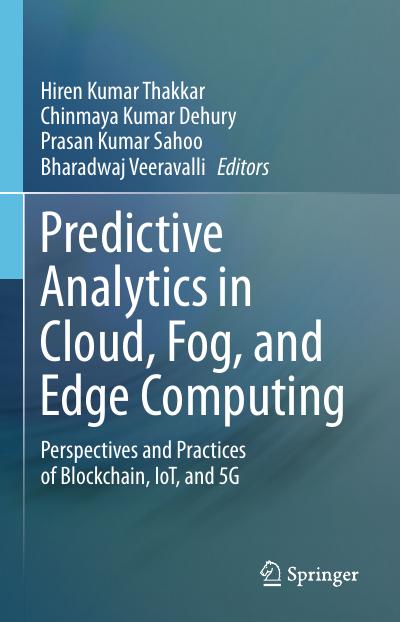
English | 2023 | ISBN: 978-3031180330 | 258 Pages | PDF, EPUB | 34 MB
This book covers the relationship of recent technologies (such as Blockchain, IoT, and 5G) with the cloud computing as well as fog computing, and mobile edge computing. The relationship will not be limited to only architecture proposal, trends, and technical advancements. However, the book also explores the possibility of predictive analytics in cloud computing with respect to Blockchain, IoT, and 5G. The recent advancements in the internet-supported distributed computing i.e. cloud computing, has made it possible to process the bulk amount of data in a parallel and distributed. This has made it a lucrative technology to process the data generated from technologies such as Blockchain, IoT, and 5G. However, there are several issues a Cloud Service Provider (CSP) encounters, such as Blockchain security in cloud, IoT elasticity and scalability management in cloud, Service Level Agreement (SLA) compliances for 5G, Resource management, Load balancing, and Fault-tolerance. This edited book will discuss the aforementioned issues in connection with Blockchain, IoT, and 5G.
Moreover, the book discusses how the cloud computing is not sufficient and one needs to use fog computing, and edge computing to efficiently process the data generated from IoT, and 5G. Moreover, the book shows how smart city, smart healthcare system, and smart communities are few of the most relevant IoT applications where fog computing plays a significant role. The book discusses the limitation of fog computing and the need for the edge computing to further reduce the network latency to process streaming data from IoT devices.
The book also explores power of predictive analytics of Blockchain, IoT, and 5G data in cloud computing with its sister technologies. Since, the amount of resources increases day-by day, artificial intelligence (AI) tools are becoming more popular due to their capability which can be used in solving wide variety of issues, such as minimize the energy consumption of physical servers, optimize the service cost, improve the quality of experience, increase the service availability, efficiently handle the huge data flow, manages the large number of IoT devices, etc.
HomepageResolve the captcha to access the links!